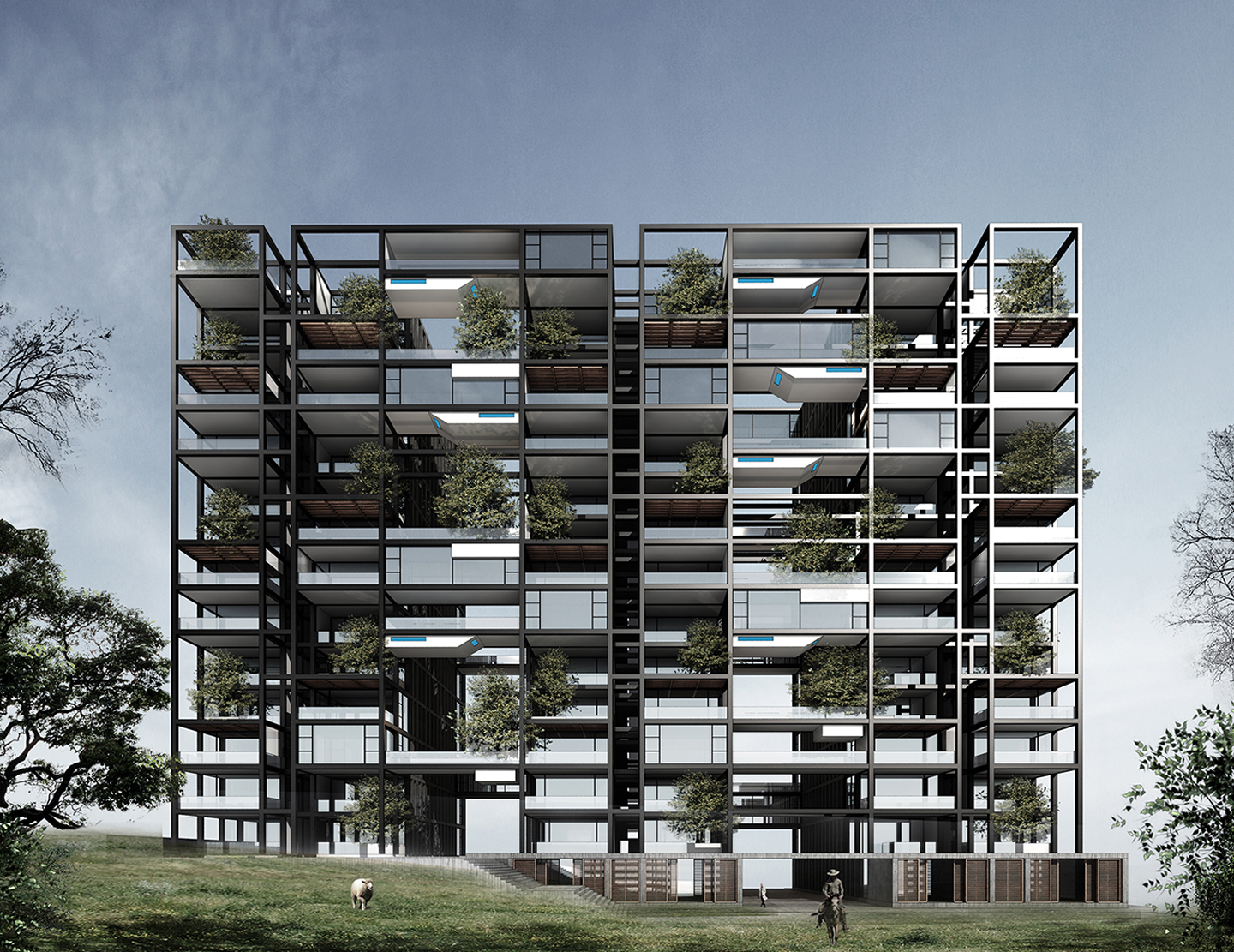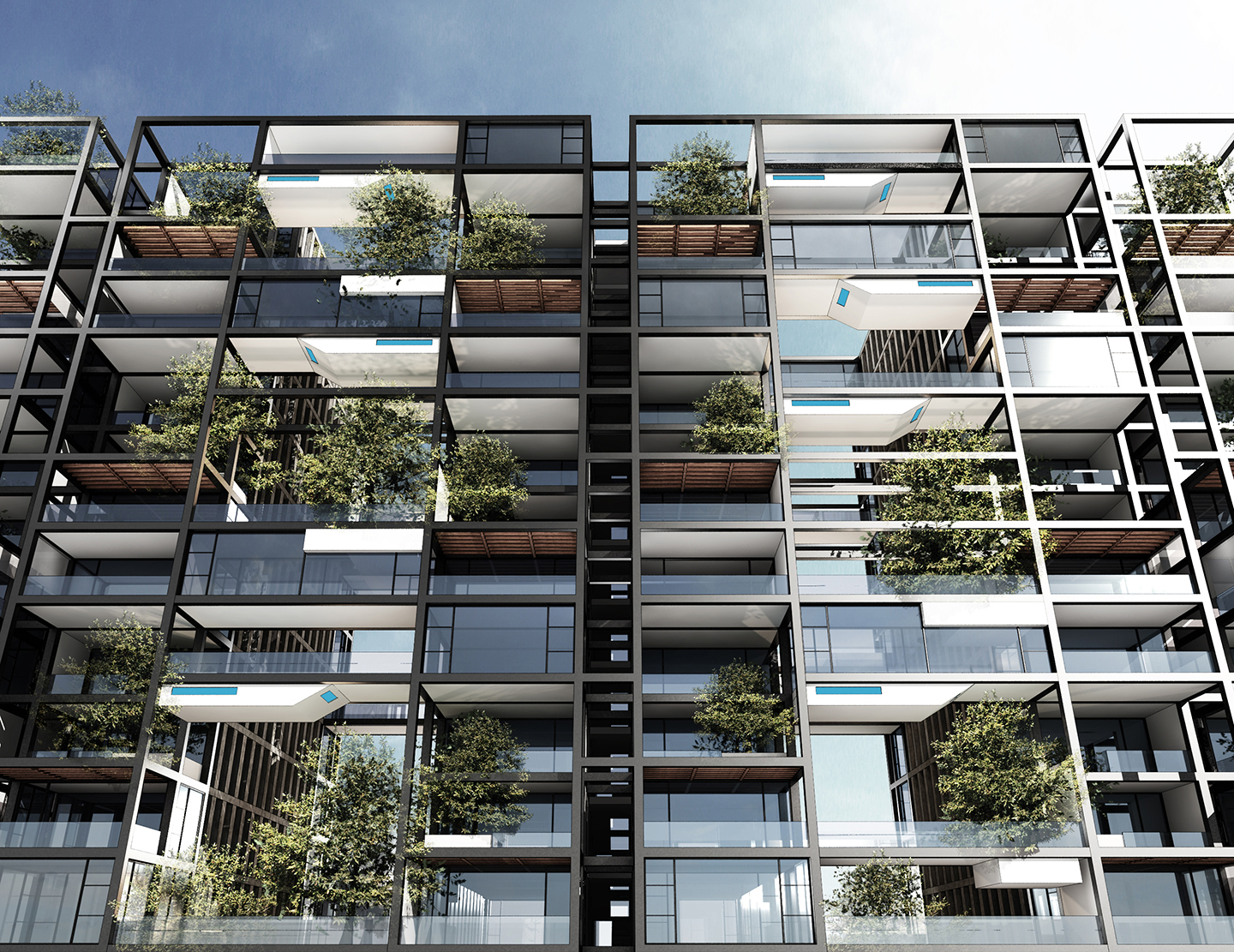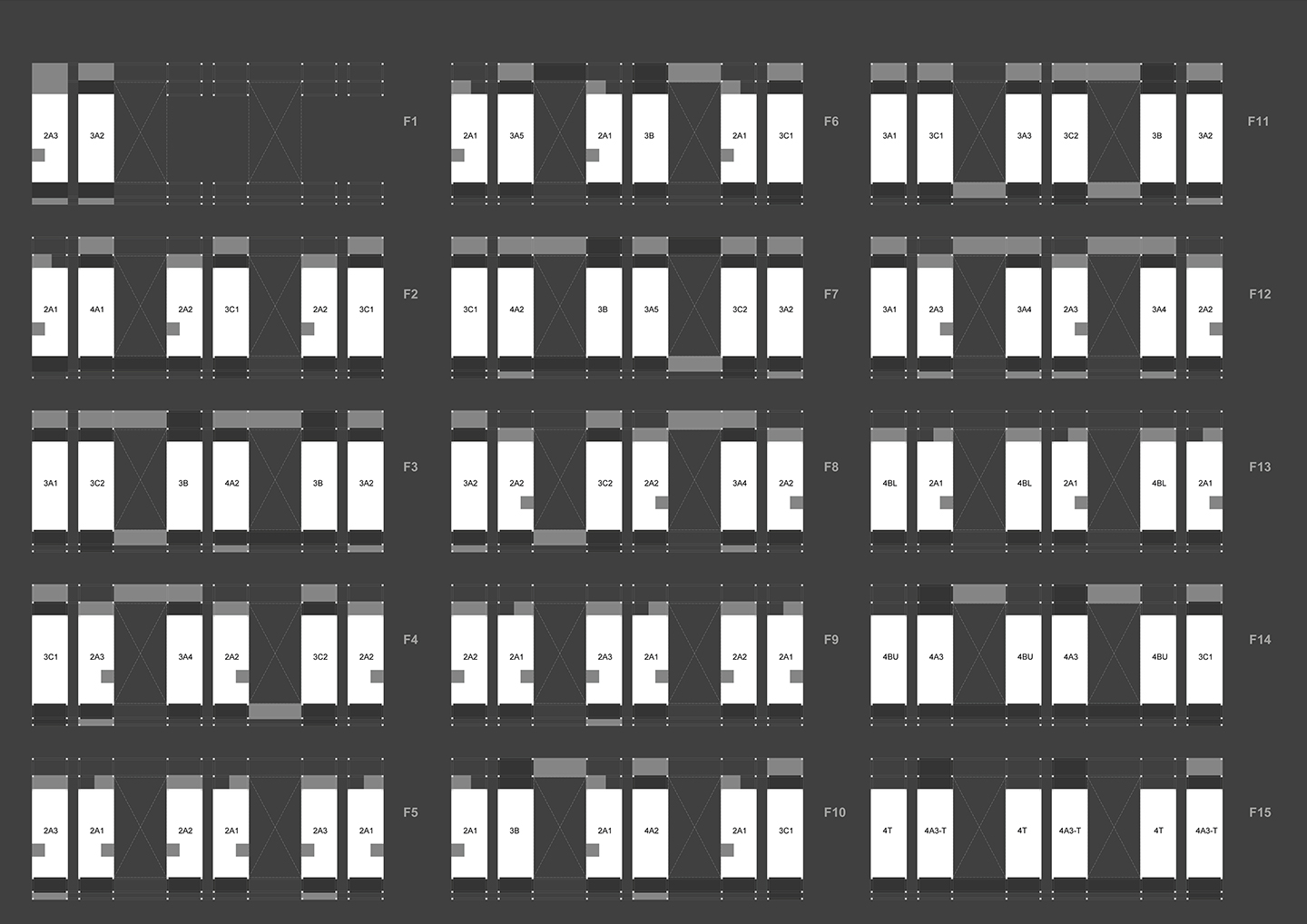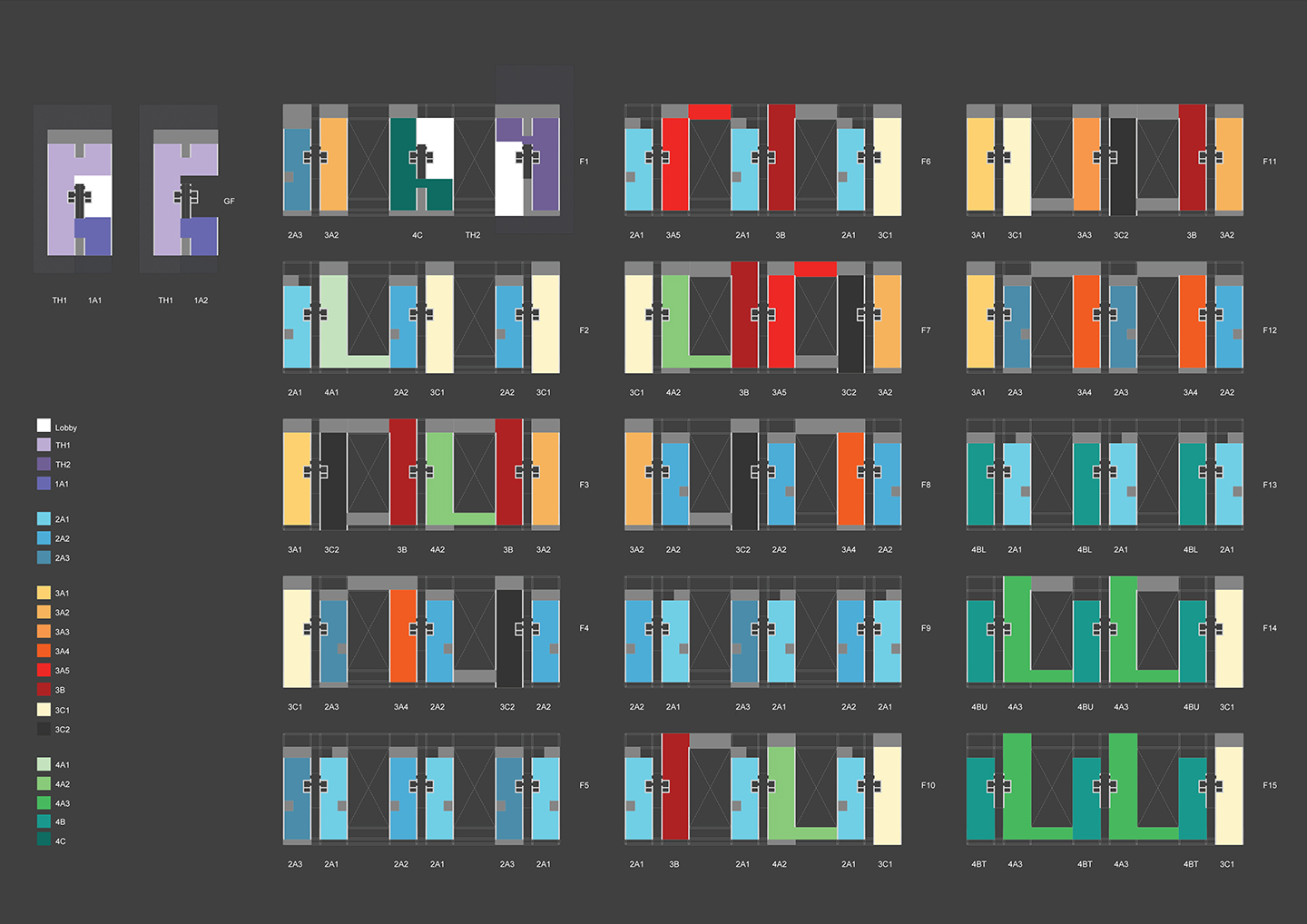
Plots # 02 & 03 are located in Hazmieh, a southeastern suburb of Beirut. The sites are part of a new mixed use, primarily residential development led by Solidere International, a real estate company in charge of the rehabilitation and reconstruction of the Beirut Central District. The “Beirut Village” master plan is divided into 15 plots assigned to a list of different local and international architects.
The intervention is to be located on two identical plots of 3,760 square meters of total surface area, with an allowable built-up area of 10,400 square meters (gross). They are subject to imposed setbacks, strict alignments and height restrictions.
With site dimensions of approximately 40 by 80 meters, the traditional developer’s typology could have led to a heavy mass consisting of deep and typically poorly ventilated floor plates, lacking natural light at their center where the circulation core and entrance of the apartments are usually located. We chose to break down our intervention into three blocks in order to avoid this literal interpretation of the master plan.
The proposed scheme was primarily driven by the particularity of the location – which includes a planned park – as well as by the desire to take advantage of the region’s mild climate through the strive for generous natural light and cross ventilation in each unit.
Originally conceived as a site of two plots bordered by a park on one side, a street on the other, and separated by a pedestrian passage of 10 meters in width, our intervention reinterprets this original scheme into one that comprises three blocks that each include two apartments per floor plate, and that are separated by two 11.5-meter wide pedestrian passages. An open core at the center of each block further subdivides each floor plate into two narrow elongated slabs, allowing interior spaces to further be exposed to the exterior as a result of the increased proximity of all spaces to peripheral glazed surfaces.
Each block is served by an open vertical circulation core that feeds two apartments per level, each benefiting from a direct view of the planned park. These typical modules of 21 by 4 meters represent the standard two-bedroom apartment configuration, upon which the larger and more complex apartments are based. These base modules either become a larger two-bedroom apartment or transform into a three-bedroom unit, whereas the merging of two of these two-bedroom units is what forms the four-bedroom apartment types.
The variation occurs within two “scaffoldings” integrated into the front and back facades of the entire project. The base modules are expanded through the scattering of left-over interior net space and allowable surface area of balconies throughout the 8-meter wide “scaffolding” in the front, as well as the slightly smaller 2.5-meter one in the back.
These additions range from increased interior reception spaces, bedrooms and added balconies, to seemingly floating swimming pools and interior bars which appear to bridge between the three blocks, while simultaneously gaining additional views of the park through the 11.5-meter voids between them.
The approach of working from the base module, and gradually adding and subtracting to it solely as needed within a coherent variation system led to an efficient total of 86 units, ranging from one-bedroom to four-bedroom apartments, each with its reception space oriented towards the park, an outdoor balcony or terrace, as well as maximal glazing.
The final result is a scheme whose monumentality is blurred through the addition of a dynamic skin seemingly disintegrating as it reaches out to the preferred orientation of the planned park.











